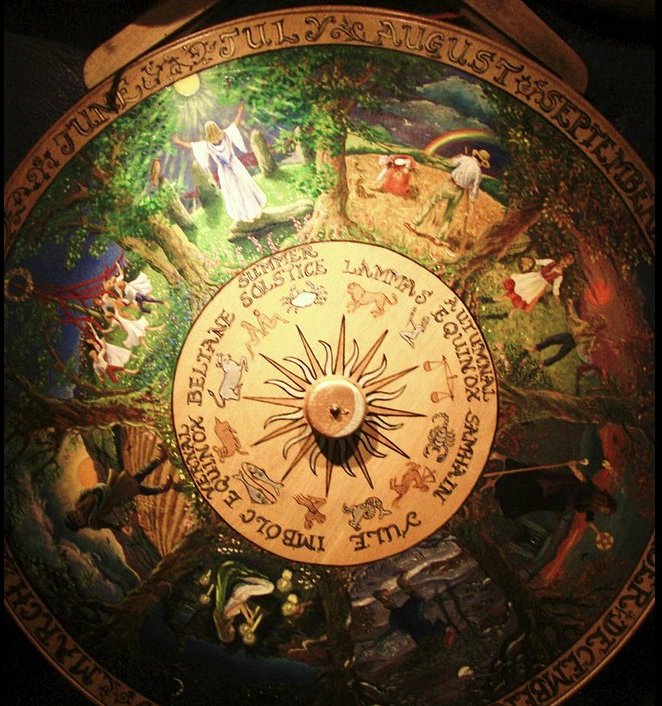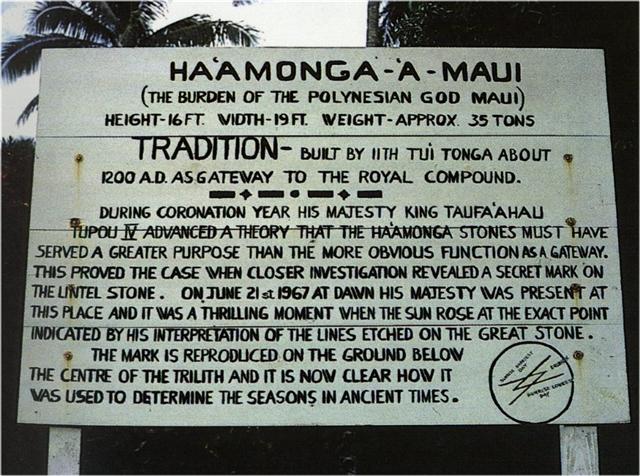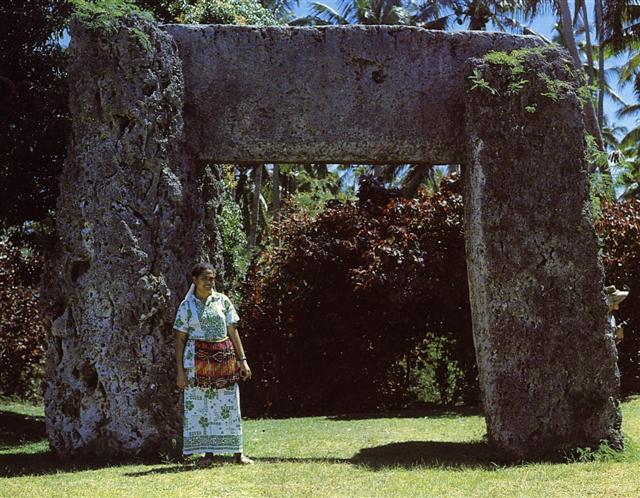10-11. Next, in another statement it was said that the golden part of the rim at right on the Nebra disc once would have had a counterpart at left, although it now had been lost:
Possibly this one had been removed, I thought, because with the sickle of the growing moon (as viewed by an observer north of the equator) at right on the disc the 'golden coin' at center left ought to represent the face of the Full Moon rather than the face of the Sun which would not be visible during the night - except as a nakshatra mirror image on the face of the Full Moon. ... But the time of his predestined defeat by the dark brother, Tezcatlipoca, was ever approaching, and, knowing perfectly the rhythm of his own destiny, Quetzalcoatl would make no move to stay it. Tezcatlipoca, therefore, said to his attendants, 'We shall give him a drink to dull his reason and show him his own face in a mirror; then, surely, he will be lost'. And he said to the servants of the good king, 'Go tell your master that I have come to show him his own flesh!' But when the message was brought to Quetzalcoatl, the aging monarch said, 'What does he call my own flesh? Go and ask!' And when the other was admitted to his presence: 'What is this, my flesh, that you would show me?' Tezcatlipoca answered, 'My Lord and Priest, look now at your flesh; know yourself; see yourself as you are seen by others!' And he presented the mirror. Whereupon, seeing his own face in that mirror, Quetzalcoatl immediately cried out, 'How is it possible that my subjects should look upon me without fright? Well might they flee from before me. For how can a man remain among them when he is filled as I am with foul sores, his old face wrinkled and of an aspect so loathsome? I shall be seen no more, I shall no longer terrify my people' ...
Thus the New Moon should be at the rim at left - i.e. not visible of course. Whiro 'Steals-off-and-hides'; also [in addition to the name of Mercury] the universal name for the 'dark of the Moon' or the first day of the lunar month; also the deity of sneak thieves and rascals. Makemson. It was also stated that from the beginning this pair of 'golden boughs' had not been on the disc, like the bottom 'smiling golden canoe' which had been the last item to be placed on the disc.. Furthermore, if the 'golden boughs' had been added in order to map the solstices, then - it was stated - a straight line drawn from the rising to the setting sun at winter solstice and another such line drawn between the rising and setting sun at summer solstice would cross each other at an angle of 82°. I later checked with Wikipedia where a more precise measure was given as 82.7°. This idea resembles the quincunx I thought: ... On February 9 the Chorti Ah K'in, 'diviners', begin the agricultural year. Both the 260-day cycle and the solar year are used in setting dates for religious and agricultural ceremonies, especially when those rituals fall at the same time in both calendars. The ceremony begins when the diviners go to a sacred spring where they choose five stones with the proper shape and color. These stones will mark the five positions of the sacred cosmogram created by the ritual. When the stones are brought back to the ceremonial house, two diviners start the ritual by placing the stones on a table in a careful pattern that reproduces the schematic of the universe. At the same time, helpers under the table replace last year's diagram with the new one. They believe that by placing the cosmic diagram under the base of God at the center of the world they demonstrate that God dominates the universe. The priests place the stones in a very particular order. First the stone that corresponds to the sun in the eastern, sunrise position of summer solstice is set down; then the stone corresponding to the western, sunset position of the same solstice. This is followed by stones representing the western, sunset position of the winter solstice, then its eastern, sunrise position. Together these four stones form a square. They sit at the four corners of the square just as we saw in the Creation story from the Classic period and in the Popol Vuh. Finally, the center stone is placed to form the ancient five-point sign modern researchers called the quincunx ...
But a more inspiring aspect could be the possible equation (82° + 100°) + (100° + 82°) = 364°. The angle 82° formed twice in order to map the places of the solstices would leave 100° formed twice in order to sum up to the number of the true 364 days in a year. And day 100 should correspond to "April 10:
Moving with the precession ahead in the Sun calendar from "April 10 (100) to the current position of May 21 (141) indicated the location of the Sun when rising together with Bharani (*41.4) would have been at Beltaine:
And twice 41 = 82 → Mintaka (*82.4 → *41.4 + *41) which would have risen heliacally in "May 1 (121), but which now was visible at the right ascension line of the face of the nakshatra Full Moon in the night sky of Caspar (121 + 226 = 347):
The knowledge had been lost which was proven by the design on top of the Tongatapu trilithon:
|
|||||||||||||||||||||||||||||||||||||||||||||||||||||||||||||||||||||||||||||||||||||||||||||||||||||||
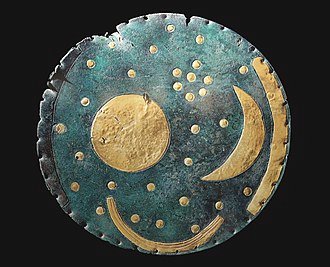

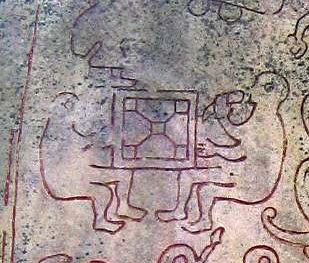


.jpg)


